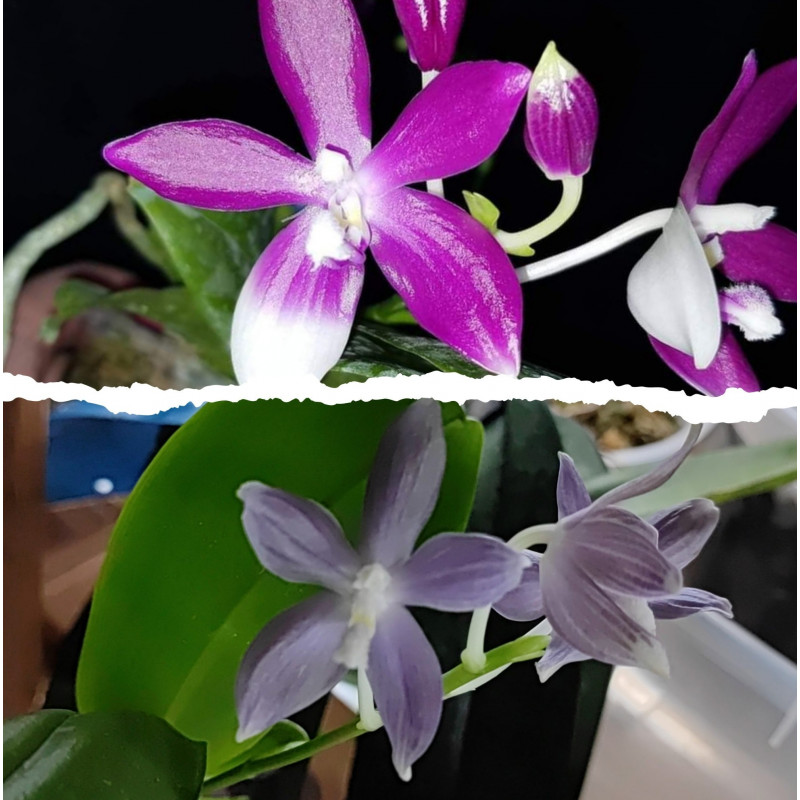- Out-of-Stock




Baby orchids in flasks, or orchid flasks, are young orchid plants resulting from laboratory production.
You will be able to witness their growth and flowering in a few years.
Orchid dossier and flask release: OUT OF FLASK ORCHID
The term "in vitro flask of orchid" refers to a technique for cultivating and propagating orchids in a controlled laboratory environment. This method is used to efficiently produce a large number of orchids, often with the goal of conserving rare species or producing specific varieties.
Here's how the process of in vitro flask culture of orchids works:
Collection of Plant Material: Samples of orchid tissues, such as pieces of leaves, roots, or stems, are collected from a mother plant.
Sterilization: The collected samples are sterilized to eliminate any microbial contamination.
Flask Culture: The sterilized samples are placed in glass flasks containing a nutrient-rich culture medium. This medium provides the necessary nutrients for the growth and development of the orchids.
Growth and Multiplication: The samples multiply and develop by producing new shoots, roots, or buds.
Transplantation: Once the young plants are sufficiently developed, they are removed from the flasks and transplanted into pots or other containers for further growth.
Hardening: The young orchids are gradually acclimated to normal growth conditions outside the laboratory. This typically involves a gradual increase in exposure to external light, humidity, and temperature.
Continued Growth: After hardening, the orchids will continue to grow and develop in a suitable environment.
In vitro orchid culture allows for the production of a large number of plants from a small initial sample, which is useful for the conservation of endangered species, commercial production, and orchid research. However, this method requires technical skills and specialized laboratory equipment to ensure successful cultivation.